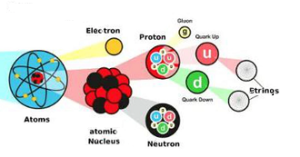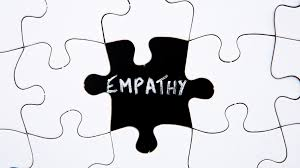
Arquivo para a ‘Linguagens’ Categoria
The pax romana and its dangers
We warn that the pax romana, the one that Rome decreed after the end of conflicts in its conquered territories, hides the hatred and indignation that does not eliminate wars; no dominated people will be comfortable seeing their goods, cultures and values denied.
decreed after the end of conflicts in its conquered territories, hides the hatred and indignation that does not eliminate wars; no dominated people will be comfortable seeing their goods, cultures and values denied.
This pax proposed by Trump in both Ukraine and Gaza may cause a momentary disarray, but it hides future confrontations that would free peoples from the yoke, and more critically, this climate is now spreading to other peoples and nations.
The Palestinian group Hamas handed over six hostages to Israel on Saturday morning (22 February). The first on the list were Tal Shoham, 40 years, and Aversa Mengisto, 39, who were handed over in the south of Gaza, in Rafah, to the Red Cross and then taken to Israel, and then three more, one more who was a Muslim and was not handed over to the Red Cross.
Under the agreement, Israel must release 602 prisoners, thus completing the first phase of the agreement, but the idea of keeping Gaza under control proposed by Trump and accepted by Israel will be an obstacle to extending the ceasefire agreement.
In Ukraine, Trump’s proposal is to hand over the territories conquered in the war, and Trump even called Zelensky a dictator, which the European Union denied, saying that he was elected in a legitimate election, while Putin rigs the elections and doesn’t give the opposition freedom.
Germany held parliamentary elections, which according to the number of seats will appoint the new chancellor. The center-left SPD (Social Democrats) of Olaf Scholz lost to the CDU (Christian Democratic Union) of Fredrich Merz, who should be the new chancellor, but it depends on an agreement that will have to be negotiated with the far-right AfD (Alternative for Germany), which has grown to the point where it is in second place (table above, before the end of counting on Sunday).
What is striking in Germany, and this is happening in many parts of Europe and the Americas, is the growth of the nationalist discourse of rejection of immigrants and the loss of values whose discourse, even in Germany, is growing among young people, the Grüne are the Greens.
Without clearly confronting the ideas and thoughts that lie behind apparently praiseworthy attitudes, we won’t be able to separate the wheat from the chaff and tell which side has the civilizing capacity to make humanity less conflictive and respectful of all.
Among the voices defending a peace without borders, without hatred and polarization is the Pope, now in a state of critical health, at the age of 88, he has placed the Church and his concerns for humanity above his health.
More than ever, we need public men of peace, above hatred and polarization, who speak and practice the values they claim to defend.
Pain today
This is the subtitle of the book: “The Palliative Society: Pain Today” by Byung-Chul Han, which outlines the new control that reigns over minds: “Be happy is the new formula of domination” (p. 26).
Society: Pain Today” by Byung-Chul Han, which outlines the new control that reigns over minds: “Be happy is the new formula of domination” (p. 26).
It’s not just rulers or local authorities who proclaim this, churches and coaches also promise this, they are the new sellers of illusion, parents want to prevent their children from frustration and difficulties: “my child won’t go through what I went through”, “I want to give them every assistance and comfort”, but life is made up of frustrations, obstacles and setbacks.
Positive psychology wants to avoid any change: “not revolutionaries, but motivation trainers take the stage, and take care that no discontent [Unmut] arises, but no anger [Mut]” and Byung-Chul Han recalls a relevant historical fact: “On the eve of the world economic crisis in the 1920s, with its extreme social oppositions, there were many workers’ representatives and radical activists who denounced the excess of the rich and the misery of the poor” (pg. 28). 28), pointing out that the word “mut” in German is also courage, so as not to confuse the translation anger with hatred.
He reminds us that “social media and computer games also act as anesthetics” (p. 29), asking a young man why he uses computers so much, he replied “I relax”, but this is the counterpoint to a society of anxious, immediate, depressed and self-centered people.
The essence of this type of “happiness” is objectification: to buy a new piece of furniture, a new car, to change their house, to have an advanced cell phone and, for the poorest, a pair of branded sneakers or a designer shirt; if this is impossible, they will choose idols that embody “thinghood”.
While “true happiness is only possible if it is broken. It is precisely pain that protects happiness from objectification. Pain carries happiness. Painful happiness is not an oxymoron. All intensity is painful. Passion links pain to happiness” (Han, 2021, p. 31).
And there is no greater pain than giving oneself to others, George Bernanos wrote: “Knowing how to find joy in the joy of others is the secret of happiness, French writer and journalist at the beginning of the 20th century, he was a soldier in the French resistance in the Second World War and wrote ‘France against robots’ and ‘Dialogues of the Carmelites’ which is a kind of ‘reverse mysticism’.
For the Greeks, the good life was not a state, but a continuous quest, which they defined as happiness, but they did not abandon contemplation, wisdom and reason in order to live well.
“The society of survival loses all meaning for the good life. Even enjoyment [Genuss] is sacrificed to health elevated to an end in itself” (pg. 34), so what it actually leads to is a painful life of striving for survival, at least for the average person, although of course there are exploiters, millionaires and the powerful who also eagerly seek profit and a ‘happier’ survival.
Han, B.-C. (2021) A Sociedade Paliativa: a dor hoje. Brazil, Petrópolis, RJ: Editora Vozes.
Being, language and the word
The true meaning of the word, and consequently of language, has always been a theme of human thought. Heidegger considers it to be a characteristic element of our humanity, from which the truth of being is unveiled (the veil is removed).
consequently of language, has always been a theme of human thought. Heidegger considers it to be a characteristic element of our humanity, from which the truth of being is unveiled (the veil is removed).
In the High Middle Ages, nominalists and realists were divided over its importance. Nominalists saw that no metaphysical substance is hidden behind words, that the supposed essentials are nothing more than words or signs that represent things that are always singular.
Realism, on the other hand, is a term that can refer to different concepts, depending on the concept, so this current in philosophy defends the existence of an objective reality, which does not depend on the human mind, this objectivity built modern thought.
Although it was a reaction to romanticism, especially in literature and art in Europe, especially in France at the end of the 19th century, in the 20th century there was a certain return to nominalism, through the so-called linguistic turn, its main characteristic being the relationship between language and thought as an object of philosophical investigation.
Thus, the word and language are part of the human essence, and the dualism of objectivity vs. subjectivity is called into question, even though much of thought is tied to this concept of early modernity, where objectivity predominates.
It is language and words that are used before weapons and growing hatreds are used, it is our relationship with the Other, with objects and with everyday life, what words we follow, linguistic variations are the result of social, geographical, professional and situational factors, so the current narrative that corresponds to an impoverishment of language is the result of human impoverishment and the deterioration of social relations.
The exponential number of mental illnesses that already affect not only adults, but also school-age children, affect the difficulty of verbal communication, so it is necessary to take care of language, which is sometimes aggressive and even litigious.
Biblical wisdom reminds us (Mt 15:17-18): “Do you not understand that whatever goes into the mouth goes into the belly, and then is thrown into an obscure place? But what comes out of the mouth comes from the heart, and that is what defiles a man”.
Let’s pay more attention to what we say, how we address the Other, our capacity for listening and dialog, looking for those words that bring growth and wisdom and always seeking an empathetic relationship to communicate something important.
Pay attention to words, especially those that bring wisdom, common sense and empathy.
The third included and the counterpoint to the crisis
It is no longer the Copernican and Newtonian models that explain the universe, the center of the galaxy has a black hole, whose laws of operation still challenge astrophysics and even quantum physics, the simple operation by mechanical laws described at the beginning of modern science have already fallen apart, although mechanistic reasoning has a social survival.
Newtonian models that explain the universe, the center of the galaxy has a black hole, whose laws of operation still challenge astrophysics and even quantum physics, the simple operation by mechanical laws described at the beginning of modern science have already fallen apart, although mechanistic reasoning has a social survival.
Philosophy has already returned to the question of Being and essence, although the majority of dialogues and articles still discuss empiricist science and the idealism of Parmenides (460 BC – 530 BC), according to Popper, he and Xenophanes made a pre-project of modern enlightenment (The World of Parmenides: Essays on Pre-Socratic Enlightenment, Karl Popper), the Renaissance tried to return to Greek originality.
For Popper, both the Critical Science that Aristotle had built, as well as the philosophy of nature and the theory of nature, the great original attempts at cosmology collapsed after Aristotle, and the modern age, starting with Newton, formulates a physics that modifies part of the cosmological vision, But quantum physics and the theory of relativity destroy this model and go beyond the idealist/Enlightenment model of the logic of non-contradiction (Being is and non-being is not), creating a third included (the logic of Stéphane Lupasco and the physics of Barsarab Nicolescu).
They create new paradigms by changing the model of absolute time and space (which is now relative) and understanding quantum states of particles, discovering tunneling (a third state between quantum particles) and wormholes (non-absolute spaces that can open up in the movement of celestial bodies), see the movie Contact from Carl Sagan’s novel of the same name.
The Aristotelian logic that justified a third term has collapsed and with it the Manichean, scientific and fundamentalist logics, a clearing is opening up, larger than Heidegger would have imagined in his “Forest Paths”.
The meaning of the clearing in Heidegger’s Dasein (being-there) is a metaphor for an opening in the forest that symbolizes human experience, a static field (figure above) where we move and try to see this experience clearly (image ‘Plan Générique’ by Fotis Ifantidis).
The great clearing promises to open up in a world of conflicts of all kinds, which will at some point have a “broad” light, science itself will see the serious epistemological divergences, from an archaic scientism to pure philosophical speculation, which hides under the idea of science, which ignores the true transcendence (not the scientific one) of humanity.
The root of the social crisis is revealed within the ancient frameworks of scientific, religious and political fundamentalism, it will need to create an even greater crisis that will make humanity wake up from its idealist/Enlightenment slumber and turn towards the good (see previous post) and flee from narratives.
.
What is the Good?
This is the question that Aristotle begins to develop in his ethics (The Nicomachean Ethics): “It is generally admitted that every art and every investigation, as well as every action and every choice, have some good in view; and for this reason it has been said, with great accuracy, that the good is that to which all things tend” Aristotle (1991, p. 2).
to develop in his ethics (The Nicomachean Ethics): “It is generally admitted that every art and every investigation, as well as every action and every choice, have some good in view; and for this reason it has been said, with great accuracy, that the good is that to which all things tend” Aristotle (1991, p. 2).
Plato’s idea of the Highest Good, which is closer to an idea of the divinity of the “World of Ideas” (he divided the world into the sensible world and the world of ideas) and Aristotle’s idea of the Good, as the idea of a choice in both art and research, presuppose that this was the choice for the social and political life of the Greek polis, which would lead to the balance of politics.
This was in contrast to the world of the sophists, where all logic and choice was for power and the possession of earthly goods, so Aristotle indicates that when he talks about ethics, he is talking about human ethics.
The author reminds us that both he and Plato established themselves on principles and were not subject to mere rhetoric and the justifications of power: “Plato had raised this question, asking, as he used to do: ‘Does our path start from first principles or does it lead towards them?’ (Aristotle, 1991, p. 5).
It is this loss of principles, and the relativism that results from it, that causes contemporary thought to lose its way about what the Good is and even what happiness is. Both Plato and Aristotle don’t lose sight of it, but they know that happiness depends on life in the polis.
Thomas Aquinas in the early Middle Ages did not define the good, but he knew that it also started from principles or what he called “primary notions”, he says: “since the good moves desire, we describe it in this way as everything that desires” and as such it can approach the good or distance itself from it.
When we see the good in this way, we can use an Aristotelian and Thomist category of seeing the good as a final cause, as a perfection to be attained.
Love for our brothers and sisters, universal brotherhood, is not a “theory”, but an end to be achieved.
*In Aristotle, causes are: material: what makes up the object or being, formal: the physical and conceptual form of the object or being, efficient cause: what makes the object or being, and final cause: what the object or being is for.
Aristotle. Ética a Nicomaco (Nicomachean Ethics). translated by Leonel Vallandro and Gerd Bornheim, Brazil: NOVA CULTURAL 1991 (Coleção os Pensadores).
Middle East and Eastern Europe in tension
After threatening to suspend the truce that began on January 19, Hamas accuses Israel of violating the agreement, this weekend three more hostages of the extremist group were returned in exchange for hundreds of prisoners, the hostages were displayed on a stage in the city of Khan Yunis, in southern Gaza (photo).
began on January 19, Hamas accuses Israel of violating the agreement, this weekend three more hostages of the extremist group were returned in exchange for hundreds of prisoners, the hostages were displayed on a stage in the city of Khan Yunis, in southern Gaza (photo).
The three hostages: Israeli-American Sagui Dekel-Chen, Israeli-Russian Sasha Trupanov and Israeli-Argentinian Yair Horn, had been with Hamas since October 7 last year, the fateful terrorist attack.
The situation is tense because the American government does not accept the Hamas group’s governance in the region and is putting all kinds of pressure on the region to remain neutral.
In Eastern Europe, American policy is to consider that Ukraine will not be able to recover the territories lost in the war and is forcing a peace agreement with new borders, threatening to withdraw any support, but it is not without Russian advances in Europe. At the Arctic Pole, the Russian presence is notable, and forces from Canada, the USA, Denmark and Norway are already moving there.
Europe is not completely abandoning Ukraine, because it knows that Russia may not stop there, and has already threatened the Baltic countries, Moldova and Poland.
Last week, drones hit Chernobyl, and it seems that the drones were sent by Russia, hitting the central protection shield.
This Sunday (02/16) France declared that it would host a summit of European leaders this Monday (17) to discuss the war in the east and the security of Europe and seeks to respond to the unilateral approach of President Trump, who uses the policy of what is not good for the US does not concern him.
In all this spectrum of tensions and threats, there is always a background of hope for peace, for a return to common sense and for allowing peoples to live in peace, being able to cultivate their roots and their culture without xenophobia and wars.
Particles, sounds and language
Matter was studied in smaller and smaller particles, the atoms idealized by Democritus (460-370 BC) in ancient times, but for him they were indivisible, eternal and immutable, but modern science began to see them in smaller and smaller sub-particles.
particles, the atoms idealized by Democritus (460-370 BC) in ancient times, but for him they were indivisible, eternal and immutable, but modern science began to see them in smaller and smaller sub-particles.
Initially protons, electrons and neutrons, in the 1930s Austrian physicist Wolfgang Pauli predicted the neutrino, but it was only detected in 1956 by Clyde Cowan and Frederick Reine, in the 1960s George Zweig and Murray Gell-Mann predicted quarks, which were discovered in 1968 at the Stanford Linear Acceleration Center.
Then came Gluons, Leptons, Mesons and Hadrons to complement the Standard Model of Physics, the name given to the unified theory of physics in the 1970s. In 2012, the Large Hadron Collider (LHC in Genegra) detected the Higgs boson, which was a subparticle predicted to unify the theory, but questions remain: what is dark matter, what happens in a black hole, what causes the gravitational force, are there graviton particles?
One theory developed to answer these questions was string theory, which dates back to 1919 when it was developed by Theodor Kaluza, then Yoichiro Nambu, Holger Bech Nielsen, Leonard Susskind, John H. Schwartz and Michael B. Green, to name but a few important and well-known physicists.
The up and down quarks that make up protons and neutrons, joined by the force of gluons, would form different vibrations that would compose themselves to form elementary particles, so the whole universe could be the result of primitive forms of vibrations, sounds that could be outside the audible ranges.
It attempts to unify quantum mechanics and the theory of relativity, and may be a more unifying model than that of standard physics.
So we can say that sounds are the primordial “language” of the universe and everything could be composed from it. The observations of galaxy formation and black hole behavior made by James Webb could confirm or deny this theory.
In the same way, the universe would be a being of “language” in the form of vibrations formed by string theory, and our word would be something much more important than we imagine, not just because it has a certain power, but mainly because it is part of the early universe and develops with it into its most complex forms of nebulae that form giant and small stars, red giants, white dwarfs, novae and supernovae, neutron stars and black holes.
The complex universe would be in its most elementary form through up and down quarks, various forms of strings that would make up what we call matter.
An paper by the director of the Kavli Institute for the Physics and Mathematics of the Universe (Kavli IPMU), Ooguri Hirosi, and the project’s researcher, Matthew Dodelson, on the theoretical effects of strings outside the black hole’s photon sphere, was published in the journal Physical Review on March 24, 2021.
Pure heart and overcoming
Only those who manage to maintain a pure heart, a desire to always move forward, need to go beyond the world full of hurt, resentment and hatred, of valuing the “I” and not the Other, overcoming is possible if we don’t look at what passes and is of little value.
a desire to always move forward, need to go beyond the world full of hurt, resentment and hatred, of valuing the “I” and not the Other, overcoming is possible if we don’t look at what passes and is of little value.
Challenges, pains and difficulties are part of life. Winners are those who go beyond these contingencies and, more than that, show solidarity with those who pass by them.
The Korean-German philosopher Byung-Chul Han wrote: “Thus, every critique of society must carry out a hermeneutic of pain. If we leave pain to medicine alone, we miss out on its character as a sign” (Han, 2021), because we don’t know how to overcome pain and we don’t have solidarity with those who suffer.
In his book The Palliative Society: Pain Today, he wrote: “The art of suffering pain has been entirely lost to us … Pain is now a meaningless evil that must be fought with painkillers. As a mere bodily affliction, it falls entirely outside the symbolic order” (Han, 2021, p. 41).
Society finds it difficult to experience empathy, happiness and and affectivity, it is condemned to silence, and “the palliative society does not allow us to revive, to verbalize the pain in a passion” (Han 2021, p. 14), emphasis added, so passion seems to lose meaning or to be “a weakness”, when in fact it is from it that we draw the desire to persist and move forward.
In this way, we can transform pain into love, and better than this, we can better understand what passion is and what com-passion is, feelings that are becoming less and less the order of the day. The desire to diminish the other, as haters, memes and the denial of the Other do, makes society more aggressive, valuing not pain, but ´haters´, mockery and humiliation.
Believing and persisting in the belief in fundamental values for true humanism is an essential source of civility, which can contribute to a positive civilizing process in which what is most human can be valued.
In the photo above, System of Pain/Networks/Networks of Resilience, curated by Cecilia Vargas, at the Dickson Center at Waubonsee Community College, 7 June, 10th July, 2018
Han, B.-C. (2021) A sociedade paliativa: a dor hoje: Trad. Lucas Machado. Brazil: Petrópolis, Vozes, 2021.
The logic of the hater
The word is at the center of heated discussions, expressions of anger and little empathy, the logic of “me” first has entered all circles, from family to politics.
expressions of anger and little empathy, the logic of “me” first has entered all circles, from family to politics.
The translation into Portuguese would be “hater”, but given how little this word is used in Portuguese, I believe that hater will end up being nationalized, and by the way, many people don’t like the use of words like meeting, coach and open house or home-office (in Brazil not translate), although many people use them, but we have examples from the past: abajour (from French, lampshade used in Brazil), software (from English, not translate in Brazil), sauerkraut (German) and schoppen (which became chope in Brazil “draft beer”, from German) and which has nothing to do with shopping, it is to buy.
We need to avoid “hater”, “bullying”, which leads to a type of moral harassment, as well as the meme, which if used in its origin (it comes from the Greek mimesis) would be a basic unit of cultural transmission, which means imitation, but which has been transformed into a malicious analogy, for example, a certain public figure as an animal.
At the root of all this cultural perversion is not the introduction of new words into the spoken language, which in itself is not evil, but done in an evil way it becomes some kind of cultural intimidation, which leads to prejudice and hence violence.
At the root of all this cultural perversion is not the introduction of new words into the spoken language, which in itself is not an evil, but done in a malicious way it becomes some kind of cultural intimidation, which leads to prejudice and hence violence.
It’s not just a lack of empathy, it’s respect for what’s different, it’s the desire to include the Other. Various authors have written about this (Paul Ricoeur, Emmanuel Lévinas, Habermas, Todorov, Martin Buber, etc.) No contemporary philosophy worthy of the name should fail to address this issue, after all it’s a “being” of a world in common, so Being-in-the-world becomes a “being-with-the-others” in a shared world (mitwelt).
This change in behavior begins in the heart and soul of the “dasein”, where Heidegger’s clearing can open up in the midst of a dense and dark forest.
Not looking at the Other with its dignity (Ricoeur wrote “other”, Buber wrote “the sacred self”) is different from the I-that that much of philosophy also explores.
The purified heart empathically accepts the Other as a form of its Being.
The salvation of beauty
Harmony and peace have a profound relationship, just look at what countries look like before and after wars, just look at cities and even rivers and forests in a war zone.
just look at what countries look like before and after wars, just look at cities and even rivers and forests in a war zone.
It’s not a question of locking up regions of the planet, through climate and environmental change the impact on all of creation is immediate, because even if we want to live in a bubble, contact with the air, water and riches is impossible to notice.
This also applies to culture and politics. Everything seems to be a reflection of the mistreatment and lack of sensitivity to what is truly beautiful and in harmony.
For Hegel, according to his vision of aesthetics and therefore of beauty, it is science that deals with artistic beauty and not natural beauty. For him, natural beauty is the product of the spirit (Geist), and, being its product, it is part of the truth and of everything that is in nature.
Sculpture is considered a “noble” art, says Hegel: “Sculpture introduces God himself into the objectivity of the external world; thanks to it, individuality manifests itself externally through its spiritual side” (Hegel, 1996, p. 113), again the exterior is objective, a sculpture and not a Being, the other and with him all his subjectivity.
Symbolism, on the other hand, is what “seeks to achieve the union between inner meaning and outer form, that classical art achieved this union in the representation of the substantial individuality that addresses our sensibility, and that romantic art, spiritual by essence, surpassed it” (Hegel, 1996, p. 340).
For the German-Korean philosopher Byung-Chul Han, who wrote Die Errettung des Schönen (The Salvation of Beauty), a new thread runs through the question of beauty, with what he has called in other books the “lack of negativity of our age”.
We are in the age of plastic, glass and the smooth, “imperfection” is part of creation and so it is not the Greek beauty, the new forms that contemporary culture seeks, that we will find a new culture and a creative way of relating to nature.
Subjectivity is confusingly smooth, without interiority and difficulties (Chul-Han’s palliative society), it submits to a simplism that wants to smooth and polish everything, therapies to overcome fear, anguish, even religious worship is repetitive and pure “indoctrination”, readings without any hermeneutics and full of old and outdated exegesis, just as lectures should entertain and not teach, means of communication are confused with their ends (which is para-communication).
Contact with the beauty of nature is changed by its “domination”, “exploitation” and then an attempt is made to restore it by “purifying” the natural with cement, stone and violence, Han gives as an example the art of Jeff Koon, (see photo above) of the art of Jeff Koon (see photo above) of plastic figures “idealized from the inside and the form on the outside.
Han, B.C. (2015) Die Errettung des Schönen (A salvação do Belo), DE: Fischer Verlag.
Hegel, George W. (2001) Cursos de estética. Brazil, São Paulo: Edusp.

